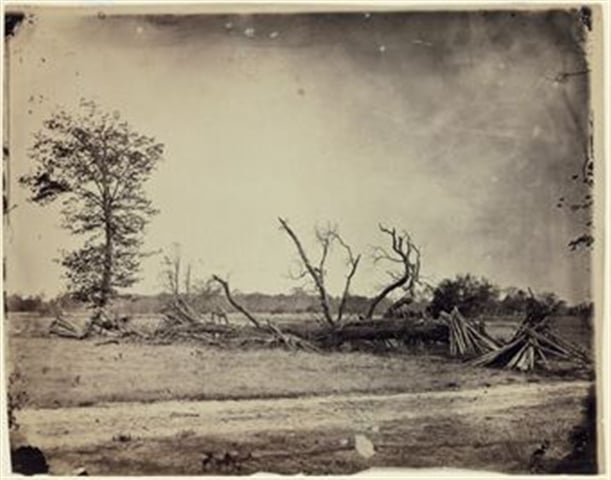Art & Exhibitions
Forgotten Civil War Mural Rediscovered in Storage
A case of mistaken identity solved.

A case of mistaken identity solved.

Sarah Cascone

After languishing in storage for years, a large oil painting by Civil War artist James Walker has been rediscovered in Saratoga Springs, New York, reports the New York Times.
Titled The Battle of Resaca, the Civil War mural has been on the move since 1958, when the building where it had hung since 1887, on Manhattan’s Upper West Side, was demolished to make way for Lincoln Center. In the 57 years since, it has bounced around from the Brooklyn Navy Yard to West Point Military Academy to Albany, where it was stored successively at the Capitol, an armory, and the nearby Watervliet Arsenal. Finally, in 2002, the painting wound up at the New York State Military Museum, which is run, like New York City’s Park Avenue Armory, by the state’s Division of Military and Naval Affairs.
By that point, the 5-by-12-foot canvas had been rolled up for storage and mislabeled as a Gettysburg scene. It wasn’t until Military Museum director Courtney Burns took a closer look that the museum realized that the painting may have been misidentified.
After hunting through books on military history, museum officials were able to identify the artist and subject. In a book about commander Daniel Butterfield, a New York soldier who fought under general William T. Sherman in the Union’s Atlanta campaign, they found a print of the painting and an explanation of its origins. The book, written by Butterfield’s wife, claimed that the commander, who is also credited with composing the famed bugle call “Taps,” commissioned the work.
Depicted is the Battle of Resaca, fought in 1864 as part of the ultimately successful Atlanta campaign. (The Battle of Resaca itself, however, did not have a clear victor.) “I called it Resaca rediscovered,” Mr. Burns told the Times.
A British-Born Artist
Along with other artists, Walker traveled with the Union Army; practitioners of the new medium of photography also documented the carnage (see Civil War and American Photography at the Metropolitan Museum of Art). The British-born painter immigrated to the US at the age of five and was a self-taught artist. He created the large-scale work based on battlefield drawings made in the conflict’s immediate aftermath.
“It’s a scene of the various commanders in the foreground,” said Burns of the work, which relegates the battlefield to the background, then a common convention. Such murals, he added, “were meant for public viewing. They didn’t have movies back then. They were a source of entertainment. They had a lot of characters in them. Viewers would take their time to look at all the elements.”
Since its rediscovery, the Resaca canvas has been restored by the the Williamstown Art Conservation Center in Massachusetts, removing a layer of dark varnish applied in the 1920s. The Military Museum, however, can display only 16 paintings at a time, and the Walker mural is for now still stuck in storage.
“It is a great painting and has an interesting history,” Burns said. “At some point, I think we will remove one of our other exhibits and install a temporary exhibit of Resaca and our other Walker paintings. It’s the challenge of juggling time and space to do it.”
Though it may be some time before the public can see it, The Battle of Resaca is a notable addition, and one with a great backstory, to the history of American war art (see Veterans Day: America’s 9 Most Epic War Artworks).